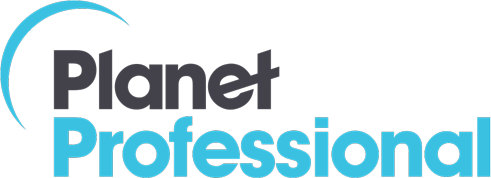How Small to Medium-Sized Businesses Can Compete for Talent
Small to medium-sized businesses (SMBs), their HR leaders, managers, and supervisors sometimes feel that they’re at a disadvantage in competing for talent when compared with their larger competitors. Bigger businesses, they believe, have bigger budgets and are able to offer richer, more attractive, salary and benefit packages.
But, while that may be true to some degree, SMBs actually have some unique leverage points to bring to bear when competing for talent. They’re able to do different things—and do things differently—than many of their big-business talent competitors.
The big benefit small and medium sized companies have that big businesses don’t: the ability to be more nimble and more flexible in meeting candidate and employee needs. That can come into play in a variety of ways that you may not have thought about.
Time to Hire
One of the challenges many organizations, but especially large organizations, face when it comes to hiring is an extensive time to hire. That can be problematic in any environment but, especially when top talent is in high demand, it can be the death knell for employers hoping to attract the best and brightest.
Large organizations are often hindered by layers of bureaucracy that can stall and sometimes even stop the hiring process. Smaller organizations, though, have the ability to move more quickly through the hiring process to make an offer. Timing matters these days. Most candidates are exploring more than one job opportunity. The employer who is first up with an offer is often the employer that lands the employee.
Landing that candidate—even top candidates—doesn’t necessarily require top tier compensation and benefit packages either.
Prioritizing the Candidate Experience
Small to medium sized employers also have the opportunity to prioritize the candidate experience and make it special. They may stay in touch more often, communicate more frequently, and make an effort to personalize each experience to the candidate and their interests.
They can offer candidates an opportunity to meet with more key members of the organization, to seek input from potential colleagues—and even customers—and to make an offer that is customized to the candidate.
Larger organizations are often hampered by the rules and policies they have in place—compensation ranges, for instance. Smaller organizations may not have, or may not be as tethered to, these rules.
Creative Benefit Packages
Total compensation—salary and benefits—come in a variety of shapes and sizes and, importantly, it’s not always about cold, hard cash. In fact, research indicates that there are some important things today’s employees may value more than traditional compensation and benefit packages.
As Harvard Business Review points out, “job flexibility has skyrocketed in importance since the pandemic, with some employees valuing flexibility even more than a 10% pay raise.” In addition, they suggest, employers can consider more “creative benefits” like caregiver support programs, childcare services, and wellness perks.
Opportunities for Growth
Opportunities for growth through job assignments, training and development are also highly valued these days. In fact, LinkedIn’s 2022 Workplace Learning Report indicates that the number one driver of a great work culture, according to employees, is the opportunity to learn and grow.
At small organizations these opportunities can be both formal and informal.
For instance, one big benefit that employees at SMBs have that those at large corporations don’t is access to senior leaders. A new, entry-level Google employee, for example, isn’t likely to interact with Google’s CEO regularly—if ever. A new employee at an organization with 250 or fewer employees is. That includes direct access to all C-suite leaders with an opportunity to stand out for contributions and to learn important insights that might not otherwise be accessible.
That opportunity to mentorship and sponsorship can offer big benefits for employees at any point in their careers.
Breadth of Experience
Employees who work in smaller organizations have the opportunity for broader experiences and more exposure for various types of roles and responsibilities. For instance, a marketing professional might gain exposure to media relations, digital marketing, event planning, and more when working in a small to medium sized organization. Peers in larger firms, on the other hand, are likely to be assigned to more narrow and siloed roles, limiting their ability to gain broader knowledge and experience.
That same exposure can apply to the types of projects employees have the opportunity to work on—and the colleagues they’re able to interact with, and learn from.
Clearly there are some potentially big benefits that smaller companies can bring to bear during the talent acquisition process. Importantly, though, they need to make sure they’re clearly communicating those benefits to candidates.
Communicating the Unique Benefits You Offer
Don’t take it for granted that candidates will know about the unique benefits your smaller company may have to offer. Similarly, don’t assume a candidate might not be interested. A younger candidate, for example, may value dependent care benefits just as much as an older applicant might—and vice versa.
Be clear and inclusive about the benefits you offer to ensure you’re appealing to a wide range of candidate needs and standing out in compelling and competitive ways that larger organizations may not be able to.
Photo Credit: Canva



